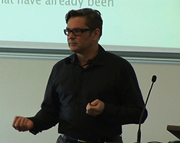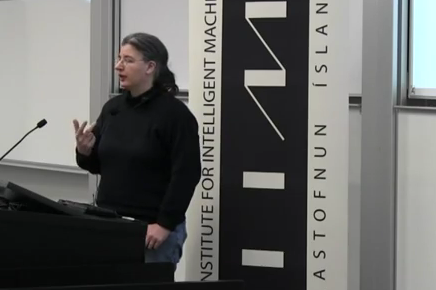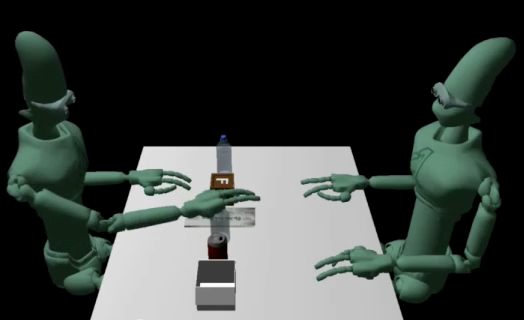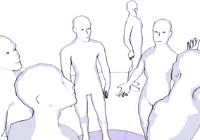 During his presentation Dr. Kristinn R. Thórisson introduced the RU-led, EU-funded HUMANOBS project that produced a radically new approach to machine learning. Rooted in cybernetics, this approach allows computer agents to learn complex tasks by observation, without the detailed information needed up-front in prior approaches.
During his presentation Dr. Kristinn R. Thórisson introduced the RU-led, EU-funded HUMANOBS project that produced a radically new approach to machine learning. Rooted in cybernetics, this approach allows computer agents to learn complex tasks by observation, without the detailed information needed up-front in prior approaches.
Tag Archives: CADIA
Come visit us on IIIM & CADIA Open Day
Spring has arrived and it’s time for the annual IIIM & CADIA Open Day. This is a great opportunity for all of those interested in the newest achievements in the field of AI as they can join the IIIM and CADIA researchers for an afternoon of exciting and informative presentations. Continue reading Come visit us on IIIM & CADIA Open Day
Impulsion Engine
Impulsion is a software platform developed to explore new concepts in social AI for lifelike interactive characters. We strive to improve virtual characters’ behaviors by making them act more realistically in social simulations. The platform represents a social AI engine that applies novel solutions to various types of interactive simulations and game environments.
“Body language, personal space, gaze attraction, and territoriality are all part of our daily social life: all are part of what makes us appear mindful and attentive.”
With knowledge from psychology and sociology, we can build lifelike interactive characters who can grasp situations, react to contingencies, and appear aware of their surroundings.
New Frontiers: Socializing Software
Tactical combat is by far the leading applicable scenario of character AI in today’s gaming industry. Demand for games with storytelling that goes beyond mere gunfire is pushing AI to its limits and expanding its versatility. Creating characters rich enough to engage in social scenarios, where we expect them to appear more lifelike, remains a problem yet to be successfully tackled by game developers.
Standing in line without rushing into others, facing a group of peers you are chatting with, sensing the comfort zone of another, and looking into each other’s eyes require a different approach than what is used for tactical combat.
Simulating Environmental Understanding
The eight-bit gaming world of yesterday left characters helplessly running into walls and awkwardly maneuvering around obstacles. The development of path-finding and local avoidance has established techniques that have given rise to a new breed character, one that no longer runs headfirst into walls but simulates an understanding of space. However, to achieve lifelike character behavior, an understanding of space is insufficient without an understanding of context. Certain locations may have an intended use that goes beyond mere topological shape. One solution would be to semantically tag locations–but what if the environment changes dynamically, such as in a space full of people who are moving around? Theories on human territoriality can help building a system that reasons about spatial affordance (what can be done in certain places or to certain objects), creating characters who can move about their environment more naturally.
Video Presentation from IIIM’s and CADIA’s Open Day – Dr. Jacky Mallett

At a time of uncertainty in the global economy, it is time to examine accepted economic theories. This is why Dr. Jacky Mallett introduced a very simple simulation of a one product economy with a constant money supply. Working with established equations, Dr. Mallett began questioning theories at the heart of the field. The results of her simulation have revealed that even the simplest economy has complexities that economists do not fully take into account, and that the market can behave in unexpected ways.
Continue reading Video Presentation from IIIM’s and CADIA’s Open Day – Dr. Jacky Mallett



